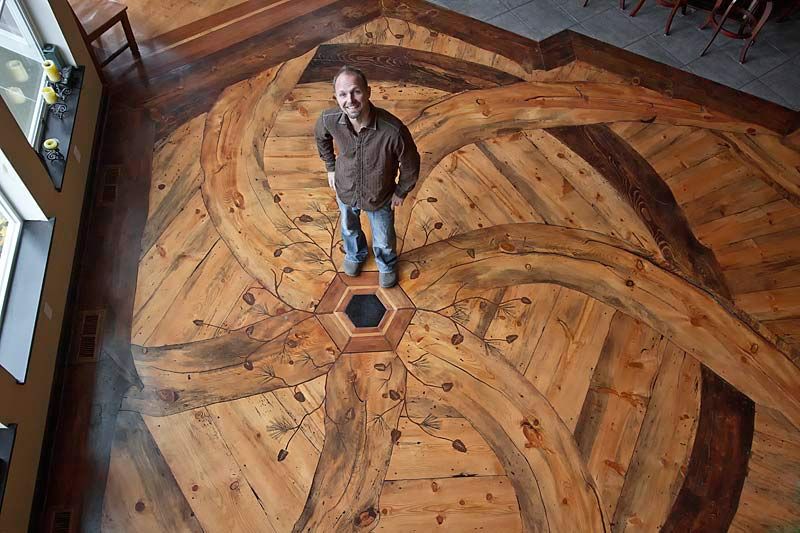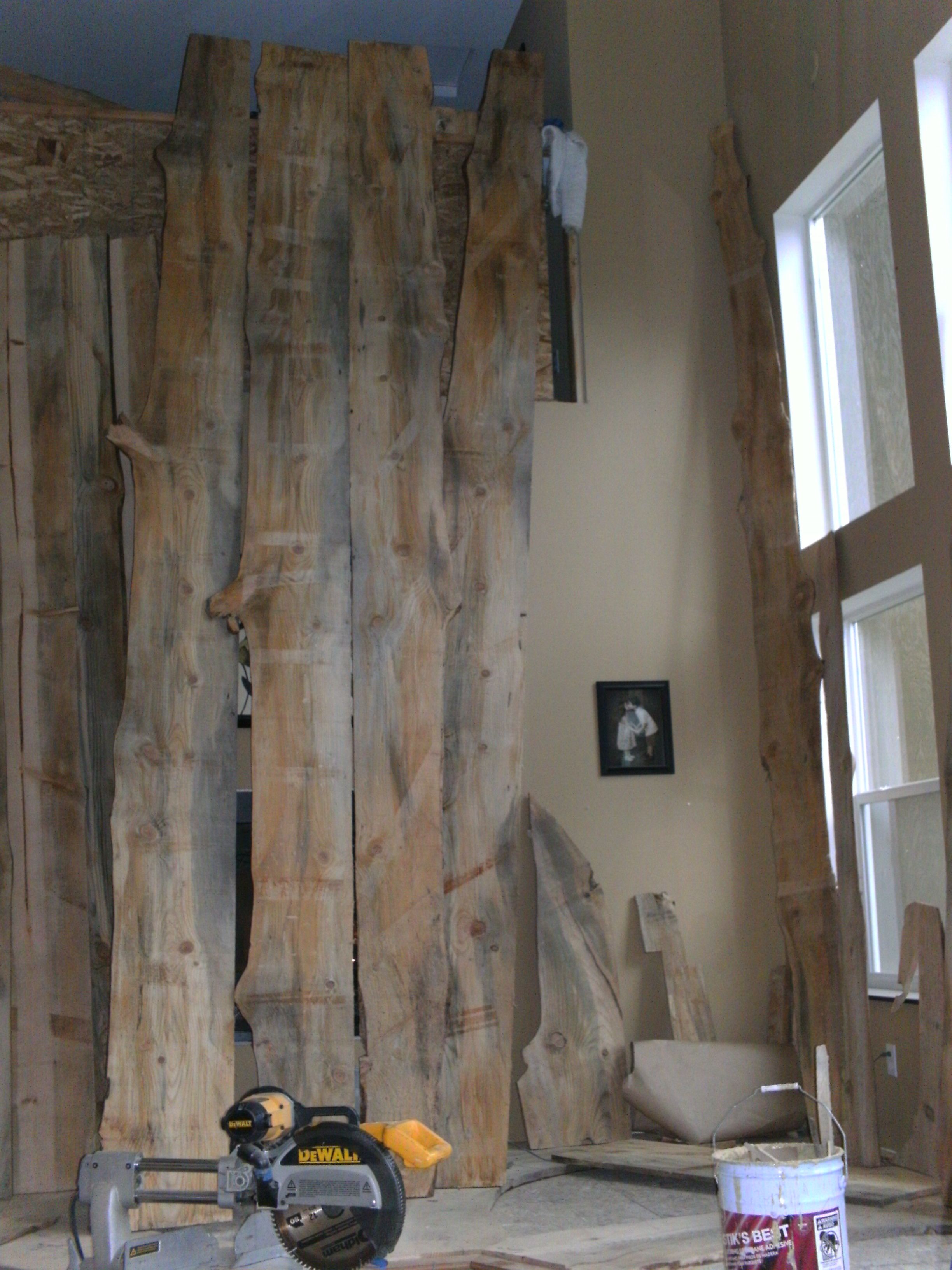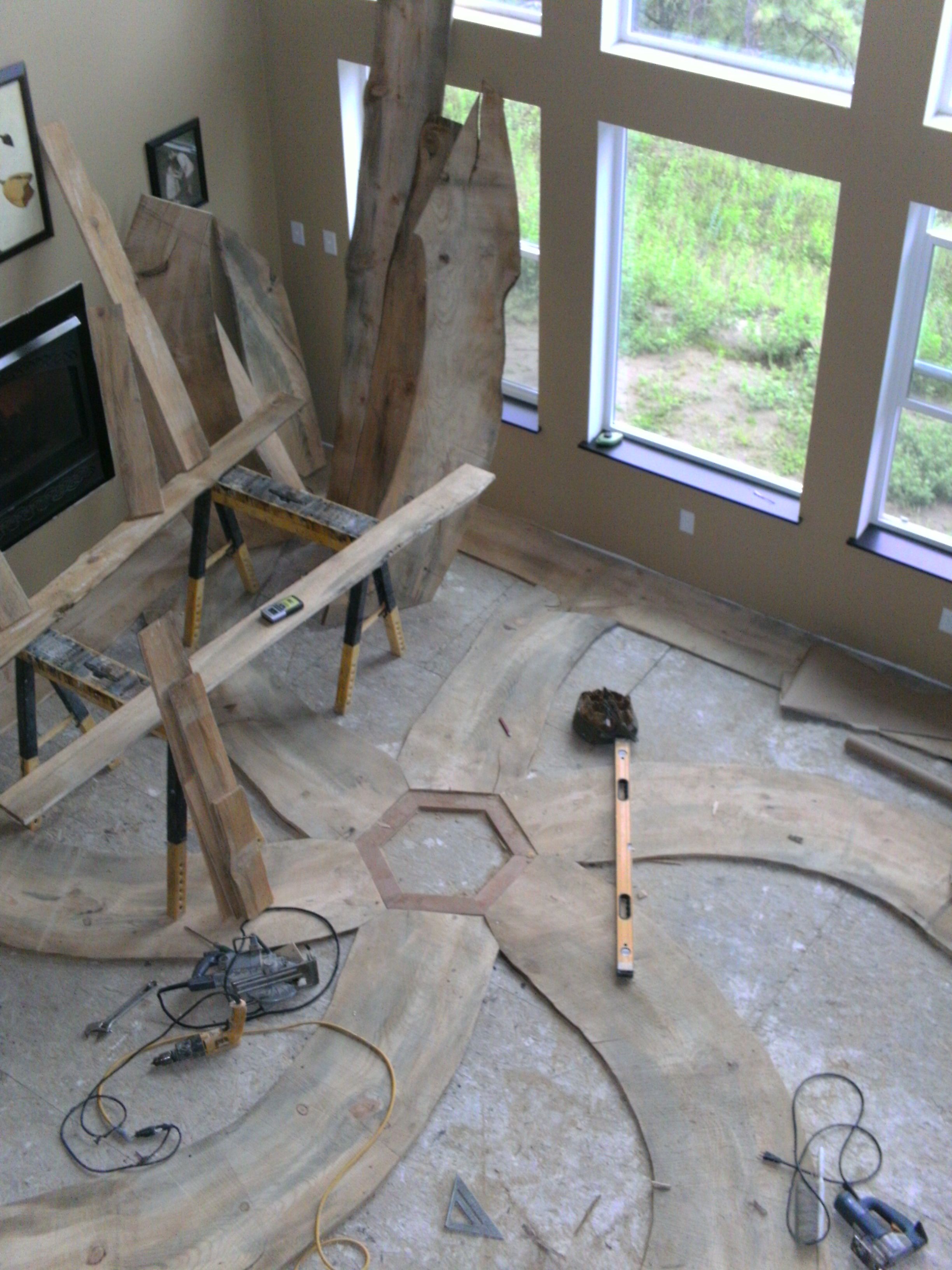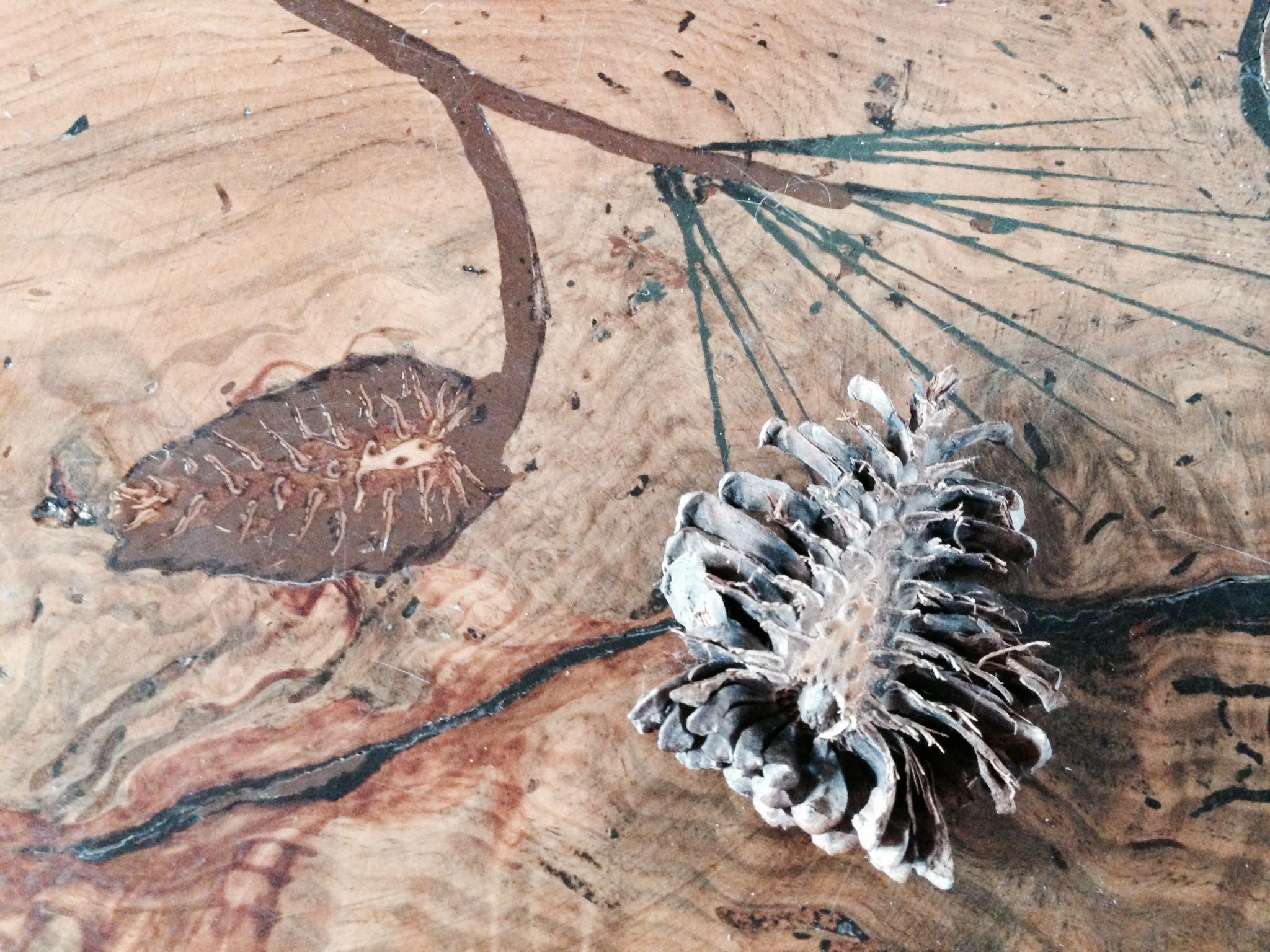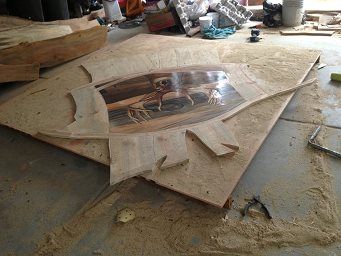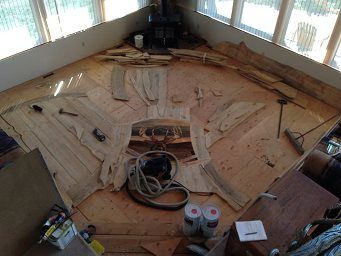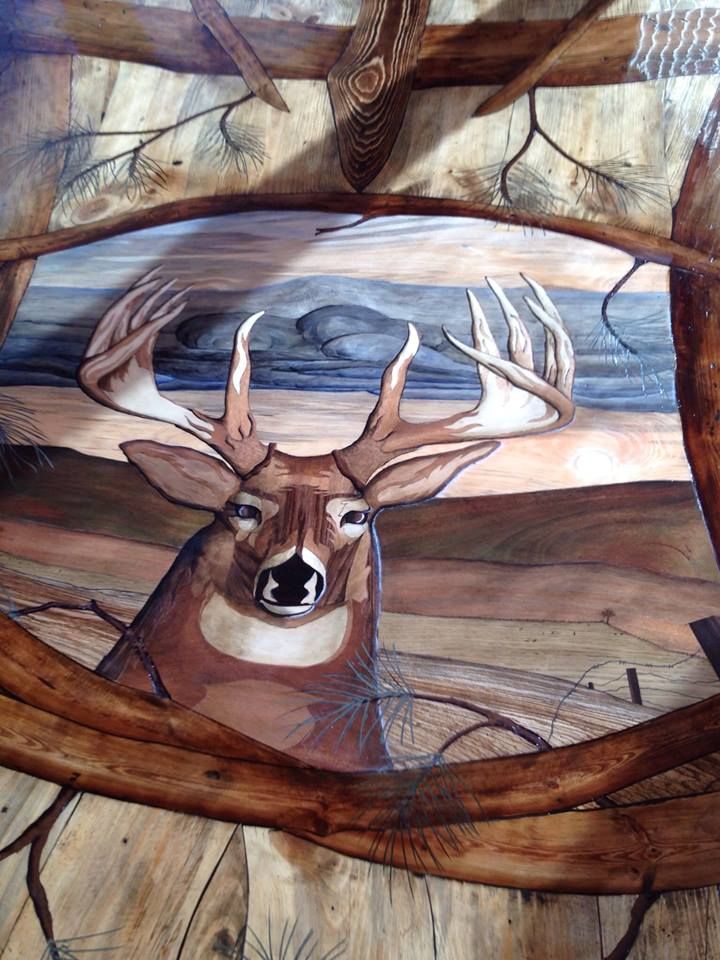The Artist’s Floor
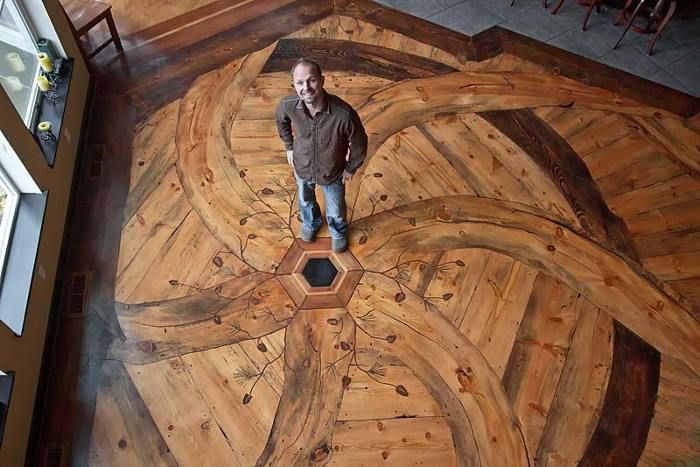
Fine Homebuilding spoke with craftsman, Tom Ourada, about building his award-winning artisan wood floors
We recently received a couple submissions to our Reader Project gallery from Tom Ourada, the craftsman behind the wood floors that grabbed so much attention on Finehomebuilding.com and on our Facebook page. His Blue Pine Swirl floor won the 2014 Floor of the Year Award in the Member’s Choice category.
Tom runs Ourada Designs in Spokane, Wash. His lifelong passion for drawing ultimately led to the creation of these artisan floors, a hands-on process involving Tom from the sawmill to the customer’s home. Tom agreed to walk us through what it takes to create floors like these.
FHB: Where do you draw your inspiration from?
TO: I draw my inspiration from the limitations of a job. Give me some parameters and I’ll run with them. It’s like solving a puzzle where I get to make the pieces. I enjoy learning by pushing myself with challenging projects. Each floor is a new experience and brings the opportunity to grow.
FHB: I’m guessing it took a while to reach this level of craftsmanship. When did you complete your first project of this kind and how has your technique evolved over time?
TO: I have been working on floor art for about three years, but I have been applying my perspective to other projects all my life. My flooring technique evolved from standard flooring techniques to fabricating flooring from trees with odd shapes. My mind’s eye sees the potential of a curved tree and that creates the challenge.
FHB: On Ouradadesigns.com, you say, “Handling a 3-ton log presents its own problems.” What are some of those problems? What are some considerations you make at the beginning when you’re staring at a log that you know is destined to become a floor? How did the pistol grip log in your Blue Pine Swirl complicate the milling process?
TO: My floors are getting flatter and faster to produce, but as with any art, it has to feel right. I can’t rush the design. My first attempt at floor art was the Blue Pine Swirl, which I finished over a year and half ago. I was fortunate to have come across an old, dead, curved log that I could see as a floor. We used a boom truck to lift it onto the mill. The trick was to keep the log in a horizontal plane. As the mill traversed its straight path we pivoted the log on the track. It took two guys two days to cut 10 curved slabs of pistol-butt blue pine. Again, a challenge to learn from. Now I can do the same job alone in about four hours.
I am always on the lookout for materials. When I’m driving, I’m hunting, and writing down the addresses of potential floor logs. The ideal log is curved, but it also can lie flat. Cutting a flat log helps the kiln process.
FHB: What is your drying process?
TO: I kiln dry all the wood to about 8% to prepare it for its new environment. And the wood needs to meet NWFA standards prior to installation. I try to keep a fair amount of kiln-dried boards available prior to starting a project.
FHB: Something I noticed when reviewing all the photos you sent is how simple the job site looks. What tools and hardware do you bring to a job like this?
TO: I use an 18-v jigsaw and an 18-v circular saw to do most of the work. Once the floor is glued, I use an electric planer to flatten any bumps. For detail work I bring in the scroll saw, router, grinder, and Dremel. When store-bought filler doesn’t get the color right, I mix my own. Then I bring in the sanders and buffers. And I can’t forget the vacuum, broom, and dustpan.
FHB: You do a fine job reflecting the natural world in your work, as shown in the inlaid pinecone and needle cluster. Where does it fall in difficulty compared to other tasks in the project?
TO: People always ask if it’s hard. It isn’t hard; it just takes a little longer to find the best way to achieve it.
FHB: One of the photos shows the Buck and Barbed Wire centerpiece on a platform. Did you build this offsite and transport it for installation? If so, how do you plan the process so it sits where you want on the floor. What is the buck’s head made of?
TO: I’ve built floors on-site and in my shop, and then shipped them to the site to be puzzled back together and glued down. Either way, the designing and building requires me to see most of the boards at once, so I lean them around the room to get an idea of what I have to work with. Then it’s a matter of arranging and cutting.
The whole Buck and Barbed Wire floor was cut to fit in my shop. The detailed centerpiece was a partially finished product that was laid out on plywood. I shipped it to the site with the surrounding, unfinished flooring. This project required a lot of detail work. To alleviate a lengthy intrusion into the customer’s home, I measured the room, reproduced its dimensions in my shop, and built accordingly.
The buck head is made from many species of wood that I handpicked for color and texture. To add depth to the wood, I tinted it, but kept the grain visible.
FHB: On Ouradadesigns.com you talk about feeling out the direction of a project, an exchange between you and your customer. How does that work?
TO: The inspiration for the Buck and Barbed Wire floor was a story the customer told me while searching his 500 acres for logs. He told me about “Moses,” the biggest buck he’d ever seen. His enthusiasm was inspiring. I wanted to create something as memorable.
As the wood dried, I sketched several designs based on the slab shapes. I asked about furniture placement and the purpose of the room to guide the designs. Once the customer picked a design and the wood was ready, I placed the main curved features on the floor and filled in around them. Then I focused on the buck and its surroundings.
FHB: What’s next for you?
TO: I’m starting another floor in a customer-built cabin. It’s a pretty busy time of year. I’m also getting ready to build a portable booth for home-show events, which will showcase my floors, walls, and countertops.
FHB: What advice do you have to offer others working toward this kind of craftsmanship?
TO: Don’t be afraid to fail when trying new things. Anything is possible, if you just break it down into small pieces. Messing up is just an opportunity to learn.
Fine Homebuilding Recommended Products
Fine Homebuilding receives a commission for items purchased through links on this site, including Amazon Associates and other affiliate advertising programs.

Reliable Crimp Connectors

Affordable IR Camera

8067 All-Weather Flashing Tape
